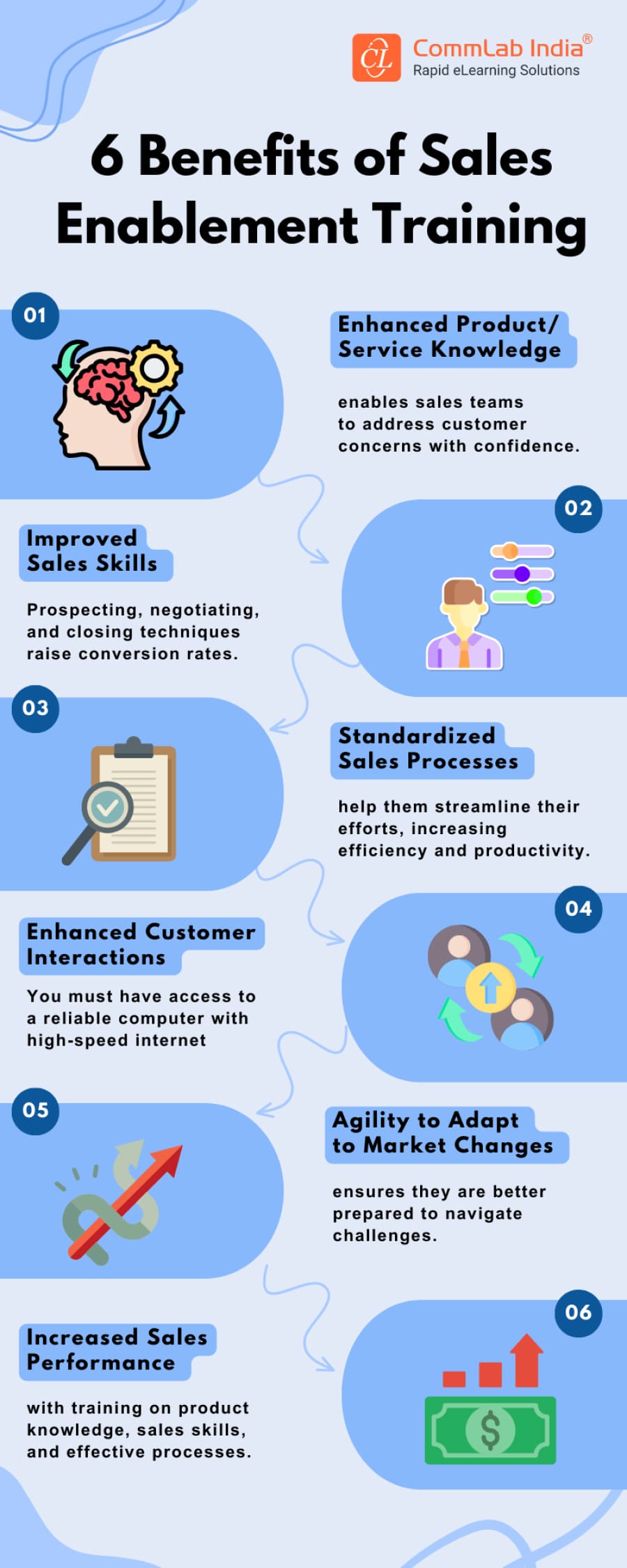6 Benefits of Sales Enablement Training [Infographic]
![6 Benefits of Sales Enablement Training [Infographic] 6 Benefits of Sales Enablement Training [Infographic]](https://blog.commlabindia.com/hubfs/blogs/benefits-sales-enablement-training-info.jpg)
PURPLE COW!
Startled? Well, it’s a marketing concept by Seth Godin that emphasizes that your product or service has to be remarkable, unique, and interesting for customers to notice and start talking about it.
But… if only it was that easy!
You know that feeling when you walk into a room and everyone else fades into beige? That's what you want your salespeople to do to prospects. But here's the rub: most sales enablement training is a recipe for beige. It's features, functions, and a firehose of facts. It’s enough to drown even the most enthusiastic rep. However, sales enablement isn't about turning reps into robots. It’s about equipping them with the tools, techniques, and strategies that enable them to connect with customers on a human level. They should be able to understand customers’ problems, not just pitch your product alone.
→ Download Now: Instructional Design Strategies to Design Engaging eLearning Courses
So, are you ready to offer sales enablement training that helps your representatives to ditch the beige and pitch the Purple Magic? Without much delay, let's dive into the benefits of sales enablement training and learn about tips to design sales enablement training courses that actually enable.
6 Benefits of Sales Enablement Training
Top 5 Tips for Designing Effective Sales Enablement Training Courses
Now that you understand the significant benefits of sales enablement training, let's explore some tips to help you design training courses that are impactful and engaging for your sales team.
- Identify Training Needs: Tailoring the training material to address specific needs and challenges faced by your sales team is indispensable for effective sales enablement training. To identify knowledge gaps and areas for improvement, you can conduct Training Needs Analysis (TNA) through surveys, focus groups, or one-on-one discussions.
- Set Clear Learning Objectives: Before you start designing or developing the training courses, it’s important to define and have a clear understanding of what you want your salespeople to achieve by the end of the training. Make sure you set SMART (Specific, Measurable, Achievable, Relevant, and Time-bound) learning objectives. They will help you design targeted content and track the program's effectiveness.
- Make Training Courses Engaging and Interactive: Lectures and dry presentations can be counterproductive. So make sure your training courses incorporate interactivities, multimedia elements, gamification aspects, and collaborative activities. All these factors will keep your salespeople engaged and motivated throughout the training.
- Incorporate Real-world Examples: Use real-life sales scenarios, customer case studies, and industry data to make the training material relatable and relevant to your salespeople's day-to-day work. It will help them gain a better idea of different situations that can arise and equip them to handle such situations with confidence and in a composed manner.
- Provide Ongoing Support: When market needs are changing so quickly, how can sales enablement training be a one-time event? Therefore, make it a point to offer ongoing resources and support to maintain the efficiency of your sales team. You can provide access to a knowledge base, coaching programs, peer-to-peer learning opportunities, etc.
Wrapping It Up!
By delivering effective and relevant sales enablement training, you can empower your sales team to achieve better results, drive significant revenue growth, and gain a competitive edge in the market. Now you even know the tips to design impactful, high-quality sales enablement training courses. So what are you waiting for? Give your sales team the resources they need and watch your business thrive! Talking about resources, we’ve got a free eBook for you. It covers instructional design strategies that will help you design engaging and learner-centric eLearning courses for maximum training ROI. Check it out below!





![5 Strategies for Successful Sales Enablement Training [Infographic]](https://blog.commlabindia.com/hubfs/blogs/strategies-successful-sales-enablement-training-info.jpg)

